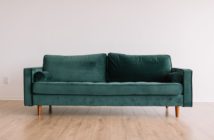Designer furniture is one of the truly, genuine delights of interior design. These artistic pieces can give just the right, unique flair to your space. Nothing says ‘me’ like that special centerpiece to set off any room.
Key pieces of spectacular furniture placed at just the right angle and location can give every room that ambiance that is unique to your style.
Some basic considerations listed briefly here will help you successfully make your desired decorative statement.
Dimensions
Dimension plays a perhaps understated role for selecting the right pieces for every room. With decorating size and proportion matter a great deal.
Each room has set parameters of width, length and height that designers must consider. How that living space allows for day-to-day usage is determined by the actual size of the pieces that go into making up that room.
The size of selected pieces dictate what can be fitted into the area and still have usable room, as well as how comfortable the space looks to its users.
Large pieces shrink the room visually making it seem more crowded as well as restrict the options for the use of the remaining space. They create a crowded, disproportionate impression of the room that makes those who use it feel cramped and uncomfortable.
Small pieces limit how many people can use and enjoy the piece at any given time. They not only create the same size displacement as larger pieces but also can cause alienation in guests or awkward hosting experiences.
Crowding a room with too many small pieces also makes the space look cluttered. Did you ever see someone pack all the furnishings from a seven-room house into a three-room apartment and wonder where all the space went?
How the room is constructed plays a central role in what type of designer furniture in any room. Selecting and placing this furniture in accordance with the natural traffic and use of the room is critical for maximizing the use of each room.
Features like doorway(s), fireplaces, windows and the rooms adjacent to the subject room all go into designer furniture use and placement.
Comfort Level
Some of the most beautiful and fantastically artsy designs have one major flaw; they are not comfortable. They are not designed with how the human body fits into sitting and reclining postures in mind.
For designer furniture to be actually worth the price, it must be comfortable to be used. It should easily perform the function for which it was designed. Furniture that does not perform this most basic function is nothing more than room decoration.
Aesthetics
Aesthetic is a fancy word for beauty. It is how the piece catches the eye, and it is the central idea for designer furniture. It should stand out and create its own unique and inviting profile.
For a piece to succeed aesthetically, it should be a piece that gets noticed from across the room or even down the hall.
Of course, the perfect complement to aesthetically pleasing designer furniture is use-comfort level. An aesthetic piece that is both inviting and ultra-comfortable is the ultimate score where designer furniture is judged.
Price
There is that limited class of designer furniture that hits the ultimate home run of both aesthetics and practical usage. However, how much you’re willing to go outside of that range to one side could very well be determined by the piece’s price.
The third most integral consideration for designer furniture selection is budgeting. While expecting to pay more is common, paying exorbitant prices is not a smart selection strategy. Furniture will be worn down and used throughout its day-to-day use, so while paying large sums of money for quality is ultimately justified, it is important to shop around for the perfect designer piece that will still invite you to actually live with it instead of roping it off so no one can touch it.
Conclusion
Designer furniture can have a huge impact in both overall comfort and visual storytelling. By considering its scale, comfort level, aesthetic, and price you can find a wonderful designer piece that fits your home and lifestyle to bring that perfect edge to your design.




